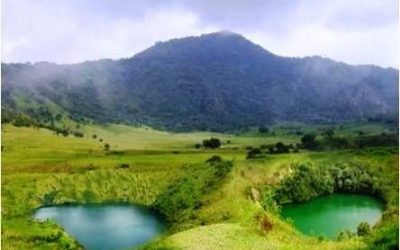
Habitat fragmentation and increased anthropogenic activities have significantly resulted to a decline in the population of western lowland Gorillas and Chimpanzees in the Dja and Deng Deng parks. The dwindling population of these species constantly encounters threat from anthropogenic interference. These include hunting, poaching and habitat fragmentation for farmlands. All these therefore threaten the survival of the population of Great Apes within these zones in Cameroon.
One counterintuitive result of the Ebola epidemic is that any population of great apes that is geographically isolated from others, either by natural or human causes, could be island of survival if Ebola wiped out the remaining ape populations in the main forest block of West Central Africa. In the same way, it is very possible that the population of Gorillas and Chimpanzees in the Dja Biosphere Reserve and that of Deng Deng National Park were once living together. Due to the increase in human population and also due to the so many Forest Management Units (FMUS), Technical Operation Units (TOU), and other exploitation units within these areas has resulted to the isolation of the population of these species to be localized only in the Deng Deng National Park and also in the Dja Biosphere Reserve. The linking of these corridors between Deng Deng National Park and the Dja Biosphere , will not only allow for easy migration within these brotherly species but will ensure genetic connectivity within these species, allowing gene flow.
This project has as an added advantage in that the forest units within these areas will be properly managed and secured for posterity.
The overall goal of the project is to secure the population of chimpanzees, gorillas and other endangered species through the creation of corridors linking the Deng Deng National Park to Dja reserve.
The specific objectives of the project will include the following:
- To identify land use patterns within the corridors linking Deng Deng National Park and Dja Biosphere Reserve;
- To create and manage corridors linking Deng Deng National Park and Dja Biosphere Reserve for genetic connectivity and migratory pattern of wildlife species;
- Conduct transects and recent surveys in order to determine the densities or relative densities of key wildlife species and anthropogenic activities in the corridors and protected areas.
- Map out biodiversity hotspots of key wildlife, spatial distribution of anthropogenic activities and key wildlife species, and their migration patterns within the corridors (gene flow).
- To prepare and set up cottage industries for local soap processing, kernel oil processing and honey processing units in the communities
The key species present are the Western Lowland Gorillas (Gorilla gorilla gorilla), Chimpanzees (Pan troglodytes), Forest elephants ( Loxodonta cyclotis), Hippopotamus (Hippopotamus amphibious) and leopard (Panthera pardus)
Based on her decades of experience in the protected area creation, management and conservation especially in facilitating the creation of the Tofala Hill Wildlife Sanctuary, advocating the creation of the proposed Mak-Betchou wildlife Sanctuary and other conservation corridors, the Environment and Rural Development Foundation (ERuDeF) is proposing a 3 year funding of US$3,000,000 for the implementation of the project, which will cover about 800,000ha.
US$1,000,000 will be used to create and manage corridors in linking the Deng Deng National Park to Dja reserve covering an area of about 800,000ha for genetic connectivity and migratory pattern of wildlife species,
US$ 500,000 will be used to Conduct transects and recce surveys in order to determine the densities or relative densities of key wildlife species and anthropogenic activities in the corridors and Protected areas.
US$ 1,000,000 will be used to prepare and set up cottage industries for local soap processing, kernel oil processing and honey processing units in the communities.
Finally US$ 500,000 will be used to Map out biodiversity hotspots of key wildlife, spatial distribution of anthropogenic activities and their migration patterns within the corridors (gene flow).
For more information, please go to www.erudef.org
Your timely contribution will not only create conservation corridors to help unite small population species whose long term survival is threatened because of isolation but would help conserve our already very fragile ecosystem.



